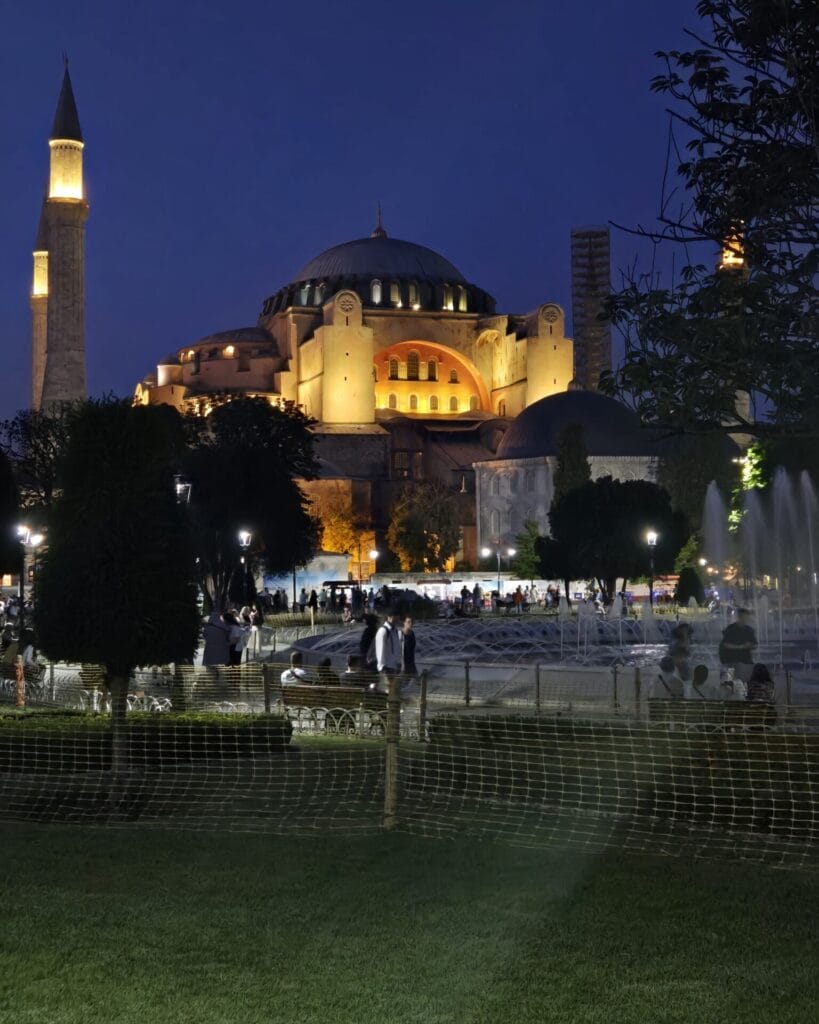Istanbul’s Tourism Transformation: From Budget-Friendly Haven to Pricey Destination
Istanbul, where East meets West, has long been a traveler’s jewel. Its rich history, vibrant culture, and stunning architecture attract millions of tourists annually. Thirteen years ago, I first visited Istanbul. It was a cultural haven and an affordable destination.
However, recent price hikes by the Turkish government and soaring rental prices have transformed this once budget-friendly city into an expensive tourist trap. This blog post explores how rising costs affect Istanbul’s tourism industry and compares it to other cities facing similar challenges.
Istanbul’s Must-See Attractions: A Brief Overview
- Hagia Sophia: A Religious Landmark Transformed
Once a cathedral, then a mosque, then a museum, and now a mosque again, Hagia Sophia is a testament to Istanbul’s diverse religious history. Its stunning mosaics and grand dome used to attract millions of visitors each year. But this has changed with recent modifications.
- Topkapi Palace: Glimpse Into Ottoman Grandeur
This palace, the opulent residence of Ottoman sultans, provides a glimpse into the grandeur and lifestyle of the Ottoman Empire.
- Blue Mosque: A Free Historical Gem
Known for its six minarets and striking blue tiles, the Blue Mosque remains an active place of worship and a major tourist draw.
- Grand Bazaar: A Historic Market with Modern Challenges
One of the world’s largest and oldest covered markets, the Grand Bazaar is a labyrinth of shops selling overpriced souvenirs, from spices to jewelry.
- Basilica Cistern: An Underground Marvel
This ancient cistern is a unique attraction, with its eerie lighting and Medusa head columns.
The Impact of Price Hikes on Tourism
- Entrance Fees: A Barrier for Budget Travelers
In the past year, the Turkish government has significantly increased the entrance fees to many of Istanbul’s main attractions. These price hikes are minor adjustments and substantial increases that have priced out many budget-conscious travelers.
For instance, the entrance fee for Hagia Sophia has more than doubled. Additionally, more than 60% of the facility is now off-limits to tourists, making it a less valuable sightseeing experience. It’s not worth the money.
- The Hagia Sophia Experience: A Controversial Addition
Istanbul opened a second museum called the Hagia Sophia Experience, further frustrating tourists. This addition has been viewed as an attempt to extract more money from visitors without offering the same grandeur as the original Hagia Sophia.
Rising Costs and Their Ripple Effect on Local Businesses
- Increased Living Costs: A Double-Edged Sword
Istanbul’s overall cost of living has surged, forcing hotel operators and service providers to raise prices. As a result, everything from dining out to purchasing souvenirs has become more expensive. Local businesses, which once thrived on the steady influx of tourists, are now struggling to keep up with the reduced foot traffic and increased operational costs.
- Personal Experiences: Tourists Feel the Pinch
Tourists have reported feeling deceived by the increased costs. For example, a food vendor’s sign advertising reasonably priced items led to a shockingly high bill after adding a few extras. This bait-and-switch tactic has left many feeling gouged and dissatisfied. And they are leaving local tourist restaurants empty.
The National Trend: Price Hikes Beyond Istanbul
- Goreme, Turkey: An Overpriced Destination
In Goreme, Turkey, a small church carved into a mountain cost me around $25 to visit, with strict no-photo policies inside. The main village museum is equally expensive, leaving visitors trapped between experiencing a once-in-a-lifetime sight and feeling ripped off.
Comparative Analysis: Other Cities Facing Similar Issues
- Venice, Italy: The High Cost of Tourism
Venice introduced a tourist tax and increased the cost of public transportation, leading to a decline in budget travelers. The city now mainly attracts high-end tourists, impacting local businesses that cater to budget-conscious visitors.
- Barcelona, Spain: Managing Overtourism with Higher Costs
In response to overtourism, Barcelona raised hotel taxes and entrance fees to popular attractions. While this helped manage the tourist influx, it also led to a decline in visitor numbers, affecting local businesses. Additionally, residents are harassing tourists due to the increased cost of living.
- Reykjavik, Iceland: The Price of Popularity
Iceland’s popularity surged in recent years, leading to increased prices for accommodation and attractions. This has made Iceland an expensive destination, deterring budget travelers.
The Consequences of Pricing Out Tourists
When a city becomes too expensive for tourists, it risks losing its appeal and economic benefits. Tourism is a significant revenue stream for Istanbul, contributing to the local economy and providing jobs. By making the city unaffordable, Istanbul risks alienating many potential visitors.
Istanbul’s transformation from an affordable tourist destination to an expensive one may be a cautionary tale for cities worldwide. Raising prices might be intended to generate more revenue, but the long-term consequences can be detrimental to the tourism industry and the local economy.
Many visitors no longer see Istanbul as the value they once knew and are reconsidering future travels to the city.
Despite a love for the people of Turkey, many tourists, including myself, have crossed Istanbul off their list of places to return to in future travels.
Till Next Time, Enjoy Life’s Journey
Joseph O’Brien

